Grasses for window boxes and flower pots: ornamental grasses and suitable combination partners for your balcony garden
In spring all hobby gardeners look for planting ideas for their balcony garden. In addition to new varieties of flowers in bright colors and ground covers with filigree leaves, the ornamental grasses are also making a real comeback this year and are conquering balconies and roof terraces. They prove to be real all-rounders that fulfill several functions in the planter all year round. Grasses are charming companions from the first spring flowers in spring, then discreetly fade into the background in summer to be celebrated again as impressive soloists in autumn. We explain which grasses are suitable for window boxes and flower pots and with which combination partners they can be staged particularly effectively.
Grasses for window boxes and flower pots: general tips for hobby gardeners

In late summer and early autumn, nurseries and garden shops are stocked with a wide selection of ornamental grasses. Because the period August-September-October is ideal for planting perennial grasses in flower boxes. The sensitive exotic species can then spend the winter indoors and then have enough time to take root. The hardy native ornamental grasses also feel good outdoors in the winter months, can easily withstand snow, wind and rain and give the balcony garden with its filigree straws a splash of color. Incidentally, there are many grasses that bloom in late summer and change color in the autumn months. So in late summer it is the right time to plant the flower boxes or draw up a plan for planting. Small grasses like to keep flowers and ground cover in the flower box company. Ornamental grasses that reach a stature height of over 80 cm usually need a flower pot on their own. However, they can be combined well with low annual flowers that have similar soil and moisture requirements. Another variant that is well suited for the roof terrace is to plant the ornamental grasses in separate planters and then arrange them next to flowers in flower tubs. This results in stylish and easy-care ensembles that are perfect for beginners.
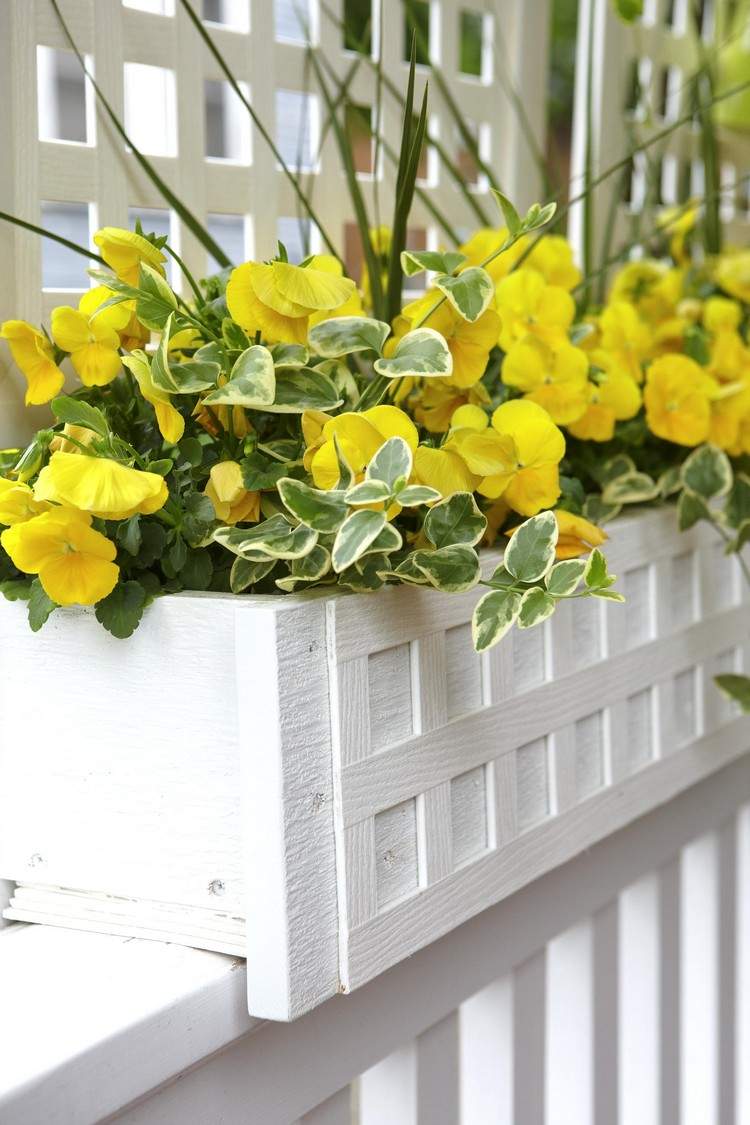
Experienced hobby gardeners or enthusiasts with a green thumb like to experiment and are always looking for suitable combination partners. If you want to plant your flower boxes with ornamental grasses, it is best to first create a sketch and mark all the plants on it. The following rules should also be observed:
- When planting the flower box, allow a minimum distance of 15 cm between the individual plant types
- Annual and perennial plants can be combined, but they must be correctly marked on the sketch.
- All plants should have similar requirements regarding location, soil and moisture.
- The individual plant types and flowers should be color coordinated.
- The flower boxes should be planted so that there is an eye-catcher in every season.
Planting grasses in flower boxes: what you should pay attention to?

Ornamental grasses, like ground cover and perennials, require more space than flowers in the balcony box. Basically, there is sufficient space to leave the root ball and a minimum distance of 15 cm between the grass root ball and the other plants. Tall ornamental grasses, which are planted as soloists in a separate flowerpot, also need space for their root balls. As far as the earth is concerned, most grasses are fairly undemanding. The potting soil or potting soil, which are available in most garden centers, works well. The same rules apply when planting a balcony box as when planting a large flowerpot. Several holes in the floor prevent waterlogging. A layer of expanded clay or gravel improves water drainage.
Grasses for window boxes: It is all about proper care
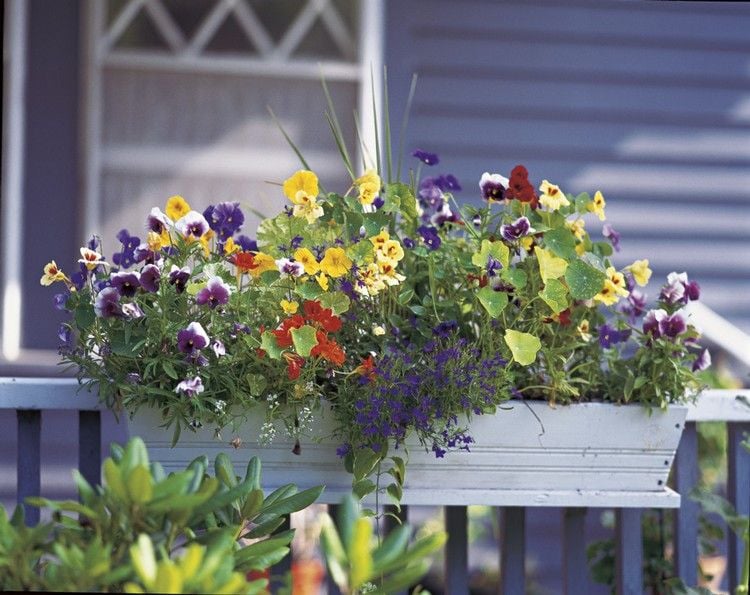
As far as care is concerned, each type of grass or type of ornamental grass has its own requirements that should be observed. As a rule, however, most ornamental grasses are sensitive to frost and need winter protection in the months between November and January. A suitable mat, a jute or cold protection fleece cover, and a coconut protection mat prevent the grass from freezing to frost in the winter. From November, the blades of grass can also be tied together so that no rainwater or snow collects on them. In the winter months, only the evergreen species are watered, and only when the temperatures are above 1 degree Celsius and it has not rained for at least a week. For all other ornamental grasses, watering can fail completely in winter. In spring, the soil is fertilized, then the grass is cut back vigorously. Dry root balls and stalks infected by pests are removed. In summer, the ornamental grasses are watered much more often, depending on your own requirements. Here is an overview of gardening in different seasons:
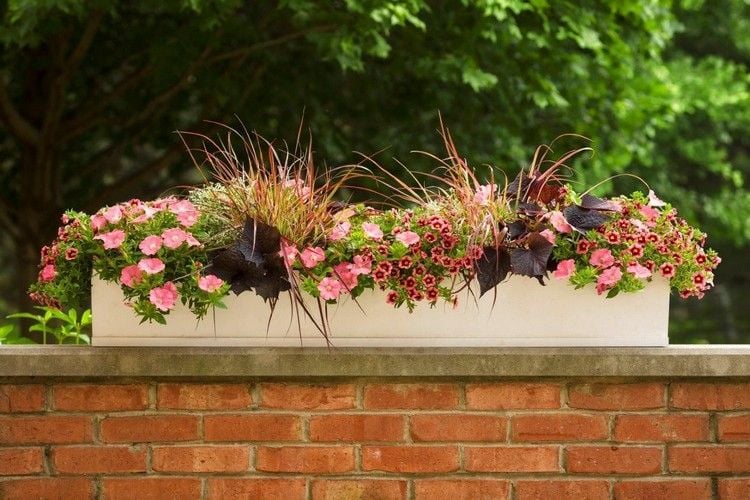
- Maintaining grasses in spring: Missing perennial ornamental grasses in spring, i.e. from April, pruning, fertilizing and possibly multiplying. For this purpose, carefully dig out the root balls in spring and disassemble them into four parts. Then insert the parts next to each other in the floor.
- Water grasses regularly in midsummer. They have to be supplied with water regularly, especially during heat waves. Young plants that are planted in spring need more water.
- Grasses in late summer and autumn: Now is the right planting time for annual grasses. Perennial plants do not need to be cut back in autumn.
- Grasses in winter: equip with frost protection at the beginning of winter. Most ornamental grasses can then easily stay outside in winter, they can tolerate sub-zero temperatures if the flower box is covered with protective fleece.
Grasses for flower boxes and flower pots: low, medium-high and expansive species
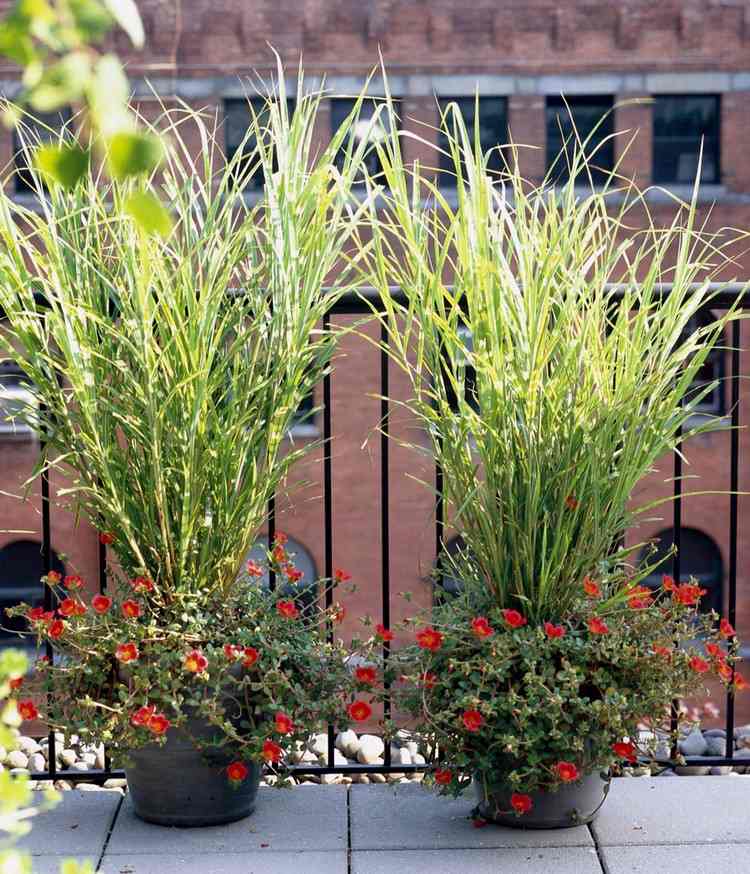
Depending on how the grasses are presented in flower boxes and flower pots, they are divided into three groups. The first group consists of the low ornamental grasses, which are perfect as a gap filler for window boxes. Medium-height ornamental grasses reach a height of between 20 cm and 60 cm and are suitable as accents in the middle of the flower box. Tall ornamental grasses provide privacy and wind protection for the balcony and can be staged either as soloists in the planter or in ensembles with flowering ground cover.
Low grasses for window boxes: These types are possible

Low grasses are staged either as gaps in the flower box or as border plants. Varieties whose stalks protrude over the edge and are perfect for planting on the edge are, for example:
Blue fescue. The ornamental grass has a hemispherical growth, reaches a maximum height of 25 cm and forms small, panicle-shaped yellow flowers at the beginning of summer. The plant is very popular for its blue colored stalks. It needs a planting distance of 20 to 30 cm and you can plant up to 17 root balls per square meter. The ornamental grass tolerates heat well and needs a well-drained soil. The perfect location is in the sun. Areas of application: in the rock garden, as border planting for flower boxes on the south-facing balcony.

Bearskin grass is an ornamental grass with a lawn-like growth that reaches a maximum height of 30 cm. The plant has attractive pointed and very fine fresh green stems. The flowering period starts in July and lasts 2 months. When planting, a minimum distance of 30 cm should be provided between the plants. The grass tolerates strong sun, but also thrives in partial shade. A permeable and slightly dry soil is an important prerequisite for rapid growth. The perennial ornamental grass can be beautifully staged with spring and summer flowers.
Medium-height grass for window boxes and planters 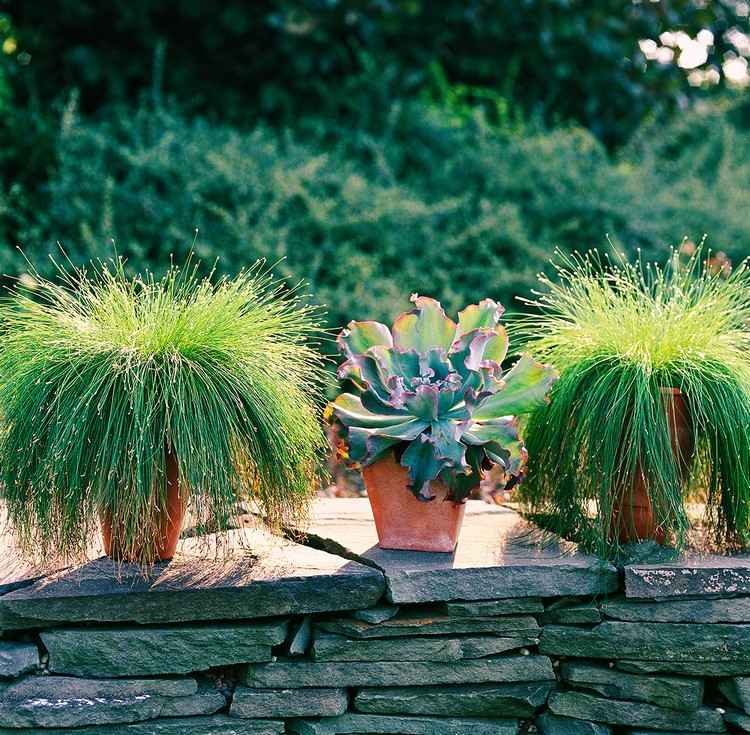
Women's hair grass grows to a height of 60 cm. The ornamental grass loves sunny locations, but has a high water requirement. The perennial plant was cultivated for the first time in Japan and is considered an exotic plant that can be found in the bonsai garden. It is not frost-proof and is overwintered in the greenhouse at temperatures between 0 and 5 degrees. The ornamental grass is used in Asia as a side plant, but can also be planted on the balcony as a soloist in the separate flower tub due to its filigree stalks.
Feather grass has enjoyed great popularity in recent years. The soft grass has slightly frayed, curved and very fine blades. It reaches a maximum height of 50 cm. A well-drained, calcareous soil is perfect for the plant. As for the location, it should be in the sun. The plant is hardy and forms very attractive fruit ornaments in midsummer.
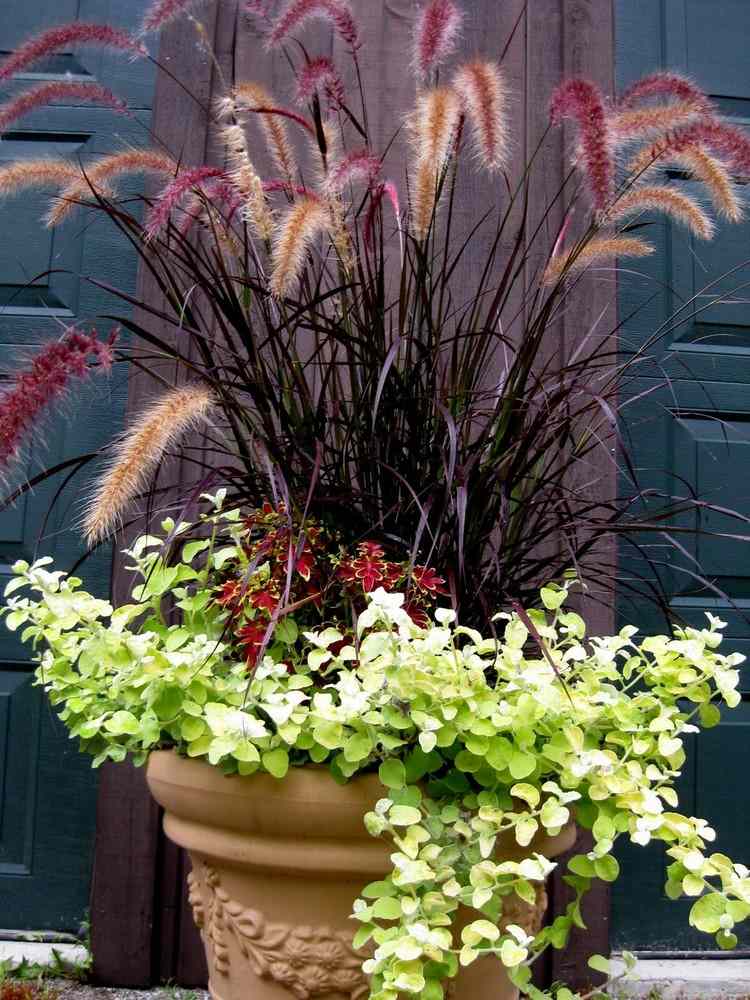
The feather bristle grass has an upright, clumpy growth and reaches a maximum height of 90 cm. It forms brown-red flower rollers. Your stalks turn yellow in autumn. The ornamental grass loves a nutritious, slightly sandy soil with a high clay content. A minimum distance of 60 cm between the different plants should always be left when planting the flower box. In the balcony box it sets accents and fills in gaps, in the flower box it plays the main role in ensembles with ground cover and low shrubs.
For beginners, lamp cleaner grass looks confusingly similar to feather bristle grass. Indeed, the two turn golden brown in autumn and form fruit clusters. The lamp cleaner grass is medium high and reaches a maximum height of 60 cm. It prefers fresh and well-drained soil and thrives best in sunny and sunny locations. Its filigree blades are a real eye-catcher and the reason why many hobby gardeners place the grass as an accent in the flower boxes.
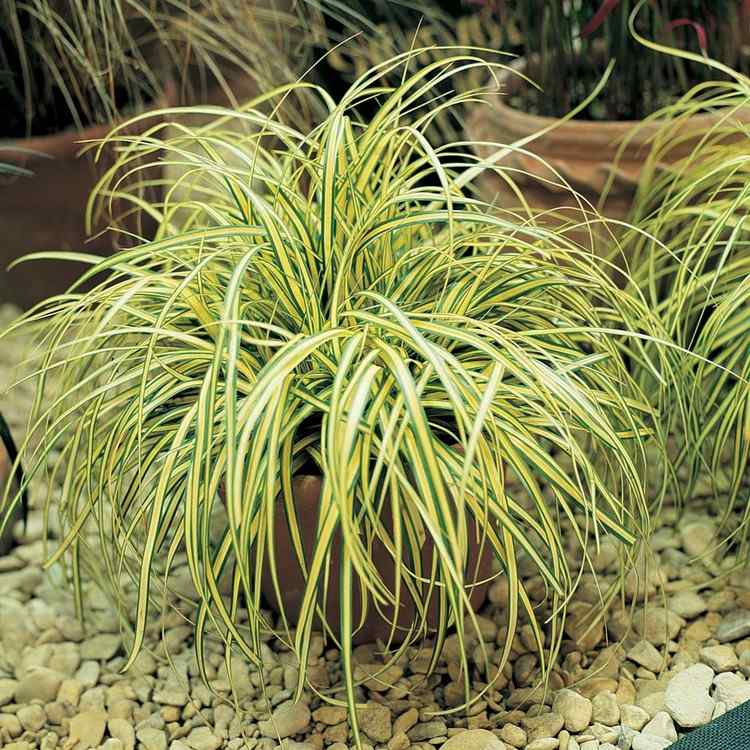
The palm frond sedge has narrow, white striped blades with a dark green edge. It has an attractive overhanging habit. The ornamental grass grows to a maximum height of 70 cm. It prefers humus-rich, but slightly dry soil. A sunny or partially shaded location turns out to be optimal. The sedge is perfect for the edge of the flower tub or balcony box, but can also be planted on the edge of a mini pond.
Tall grasses as soloists in flower pots and planters
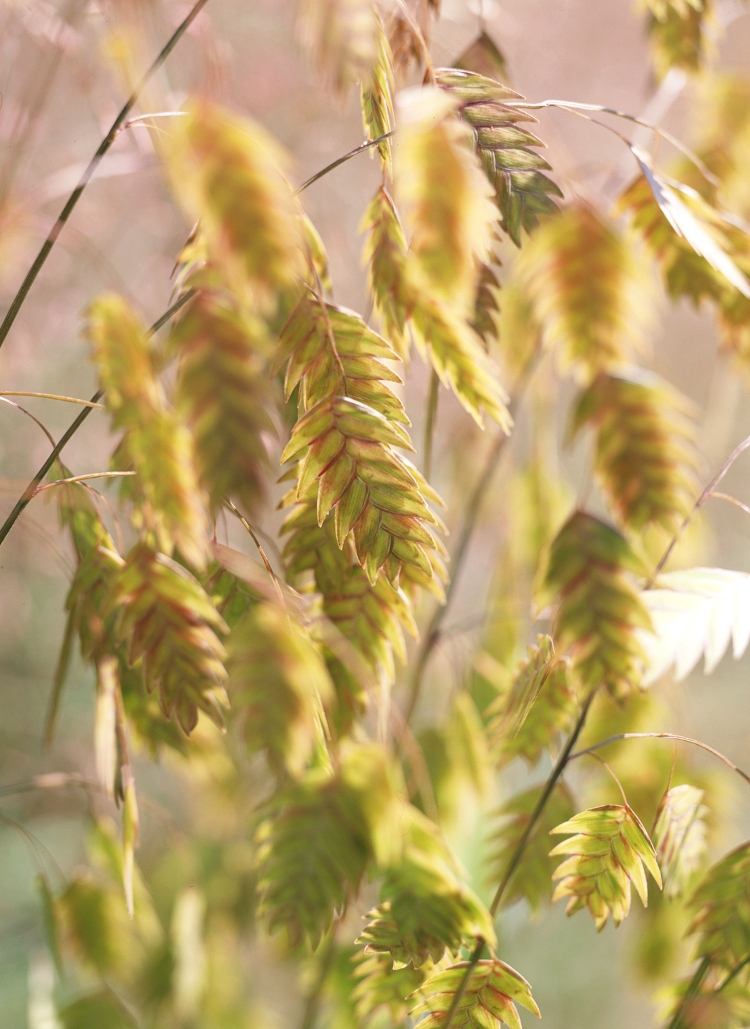
The flat-eared grass has a very decorative effect thanks to its beautiful fruit decoration. It has an upright, bushy habit and reaches a height of up to 100 cm. The plant prefers fresh, humus-rich soil and thrives best on sunny and partially shaded balconies. It is not suitable as a privacy screen, but can set accents in the flower box or planter. The ornamental grass is also suitable for cutting vases.
The sandpipe is a grass with closely spaced, tipped stalks that reaches a maximum height of 150 cm. The perennial plant has taut, upright flower stems. It prefers fresh but permeable soil with a high proportion of sand. The partially shaded and shady location promotes plant growth. The sand pipe not only looks good in the balcony box, but is also very attractive as a cut plant.
Put grasses in the flower box in the limelight: Matching combination partners

But which are the right combination partners for the ornamental grasses? A contrasting combination is formed, for example, by tall flowers such as the dahlia together with delicate, low ornamental grasses. By the way, low grasses can be combined with herbs and Mediterranean plants such as lavender, as well as with flowers with small flowers such as lily of the valley or hyacinths. Medium-height grasses can also be staged in a variety of ways; they create a harmonious picture with sparkles, roses and petunias. Tall grasses are either staged as soloists or, together with low flowers such as feather carnations, form a great ensemble.
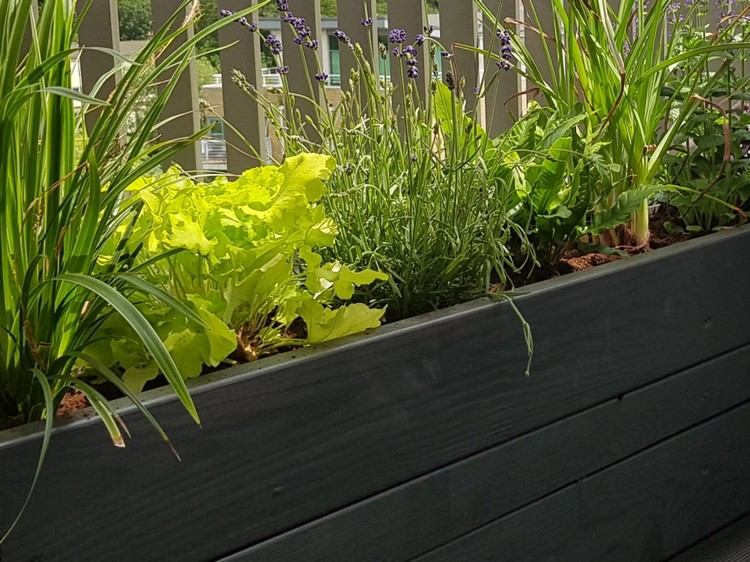
Here are some possible combination partners for your balcony box:
- Popular combination partners for the blue fescue are, for example, sunflowers, feather cloves or herbs such as lavender and thyme.
- Bear hide grass forms a harmonious overall picture with daffodils, carnations and crocuses.
- Women's hair grass gives the balcony box structure and forms a successful duo together with meadow buttons, red sun hats or ornamental onion.
- Feather grass and ball leek can be perfectly combined.
- Purple asters match the feather bristle grass
- You can pair lamp cleaner grass with autumn anemones, stonecrops or noble roses in the flower box.
- Palm frond sedge and purple bells form a delightful duo, and sparks give the ensemble variety.
- Flat-eared grass cuts a good figure with scabies, sun hats and fat hens.
- Sandpipe can be combined with other ornamental grasses and ground cover.
There are many ornamental grasses that you can use to bring variety and structure to the flower boxes. They are easy to maintain, have a decorative effect and give diversity to the balcony garden.
Grasses for planters: as a soloist or in an ensemble?
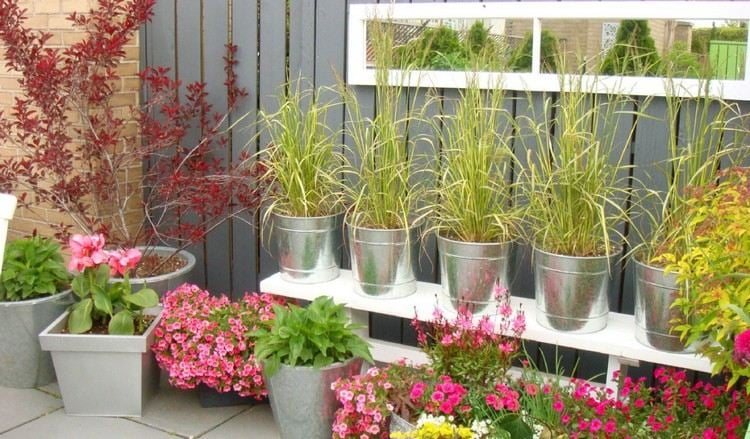
A-rose marshmallow and B-Japanese blood grass and C-fire sage and D-noble cherry
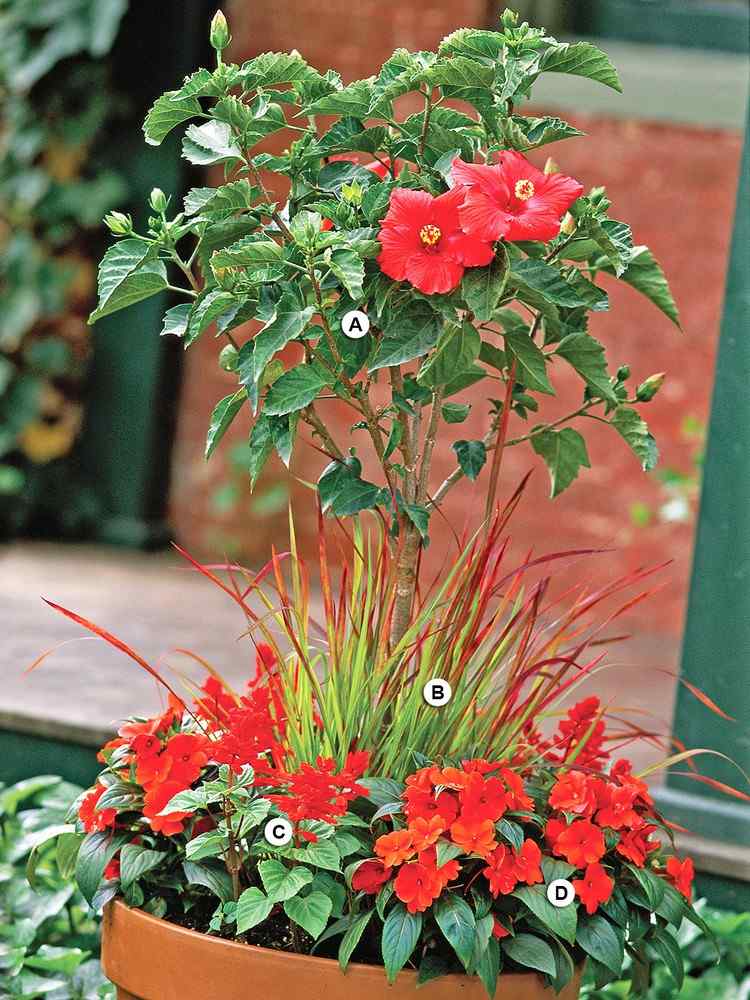
Red lamp cleaner grass along with colored nettle and Chinese reed
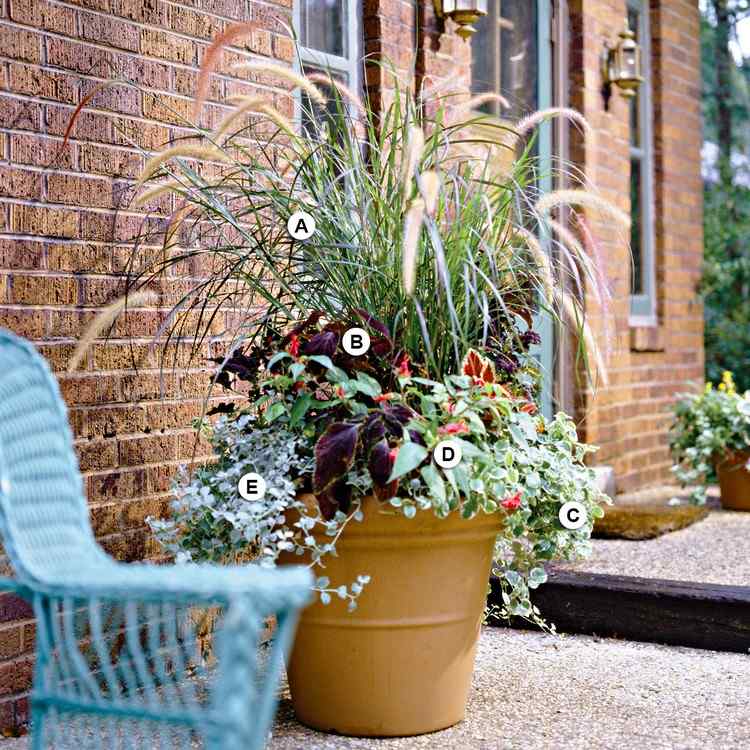
The post grasses for window boxes and flower pots: ornamental grasses and suitable combination partners for your balcony garden appeared first on Deavita.com | Living ideas, design, hairstyles, make-up, lifestyle, health and beauty tips.





















